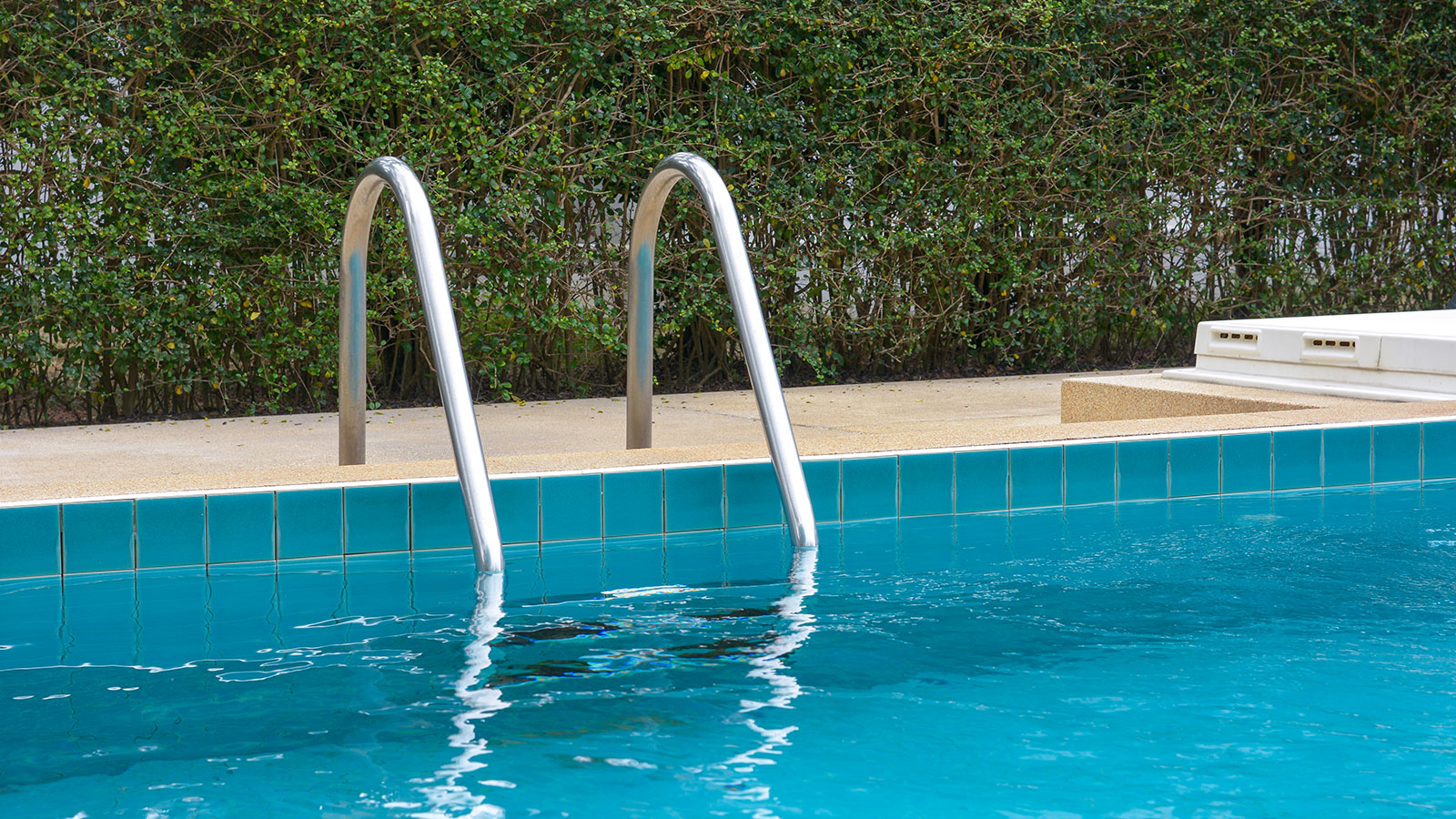How to weigh down pool steps – simple tactics to make access safe
Removable ladders and steps can float if they’re not secured. This is how to weigh them down


Pool steps provide access to the water, and while they’re often fixed in place many pools use removable designs instead. But while it’s handy to be able to store steps or a ladder when the pool’s covered for winter, their lightweight material makes them liable to float around.
Floating steps can create a hazard for anyone entering or exiting the pool, so securing them is essential to make getting into and out of the pool easy as well as safe. The way to do it? Weigh them down.
We’ve put together the alternative methods you can use to weigh down pool steps here to make the task easy.
Why you should weigh down pool steps
If you buy steps or a ladder to create access from your pool deck or patio into your pool, you might expect that this is the complete answer. But made from materials such as plastic, steps or a ladder can float if not properly secured, so additional measures are needed to keep your pool area as safe as possible.
‘Weighing down pool steps enhances safety by minimizing the risk of the steps shifting or floating, which could lead to accidents or injuries,’ explains Hubert Miles, certified pool and spa inspector through NACHI. ‘Weighted steps help maintain the alignment and positioning of the steps, ensuring they remain level and stable for comfortable entry and exit from the pool.’
To weigh down pool steps, take a look at these strategies.

1. Use water
Some pool steps are designed to allow water into the structure so the steps are weighted down. ‘Steps with a chamber that fills with water can provide added stability due to the increased weight,’ says Hubert Miles.
Design expertise in your inbox – from inspiring decorating ideas and beautiful celebrity homes to practical gardening advice and shopping round-ups.
‘However, it is generally advisable to supplement this feature with additional methods of weighing down the steps to further reinforce the stability of the steps, ensuring maximum safety and longevity.’
2. Add sand
Some pool steps are designed to hold sand in purpose-designed compartments to weigh them down. Check the manufacturer’s instructions to find out how much sand you will need – it can be a considerable amount, depending on the step design – and what weight of sand should be added where.
Use a funnel to get the sand into the holes and shake to settle it as you work.
3. Opt for sand bags
If you can’t put sand into the pool steps, you can weigh them down with sand bags instead. ‘Some pool owners use sand bags strategically placed around the base of the steps to add stability and prevent movement,’ says Hubert Miles.
The bags for the sand need to be waterproof and should be tightly sealed. Purpose-made bags are available, such as this Blasoul universal pool ladder and step weight from Amazon. Position them at the base of the ladder, adding as much weight as is required to make the ladder stable.
FAQs
How can you remove steps filled with sand?
There will come a time when you want to remove steps filled with sand from the pool, such as when you winterize a pool. At this point, the weight that holds the steps down can make them a problem even for two people to lift. The solution is to use a wet vac to vacuum out some of the sand so they become a manageable weight and can be removed from the pool.
Should I put something under my pool ladder?
A pool ladder mat is a great addition to the pool: it can protect the pool liner from damage, and it can also provide a non-slip surface that helps swimmers enter and exit the pool safely. The added bonus of a pool ladder mat is that it helps to keep the ladder in place when it’s being used.
This Skarummer swimming pool ladder mat from Amazon is a best-seller. It's made from high-quality rubber and is a non-slip design.
There are purpose-made solutions to weigh down pool steps and, if you opt for sand bags, you can make your own versions providing you use waterproof containers and secure them to the steps with nylon rope or a bungee cord.
For safety, weights should always be securely tied and close to the pool steps. They should also be positioned carefully so they won’t interfere with swimmers, nor cause a trip hazard for anyone using the steps or walking nearby on your pool patio.

Sarah is a freelance journalist and editor. Previously executive editor of Ideal Home, she’s specialized in interiors, property and gardens for over 20 years, and covers interior design, house design, gardens, and cleaning and organizing a home for Homes & Gardens. She’s written for websites, including Houzz, Channel 4’s flagship website, 4Homes, and Future’s T3; national newspapers, including The Guardian; and magazines including Future’s Country Homes & Interiors, Homebuilding & Renovating, Period Living, and Style at Home, as well as House Beautiful, Good Homes, Grand Designs, Homes & Antiques, LandLove and The English Home among others. It’s no big surprise that she likes to put what she writes about into practice, and is a serial house renovator.